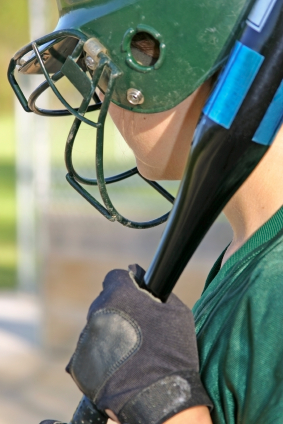The use of altered, non-approved or illegal bats in high school softball will result in the ejection of both the batter and head coach, beginning with the 2012 season. 
At its June 6-8 meeting in Indianapolis, the National Federation of State High School Associations (NFHS) Softball Rules Committee also clarified rules regarding ball color and the use of headwear during competition. All changes were subsequently approved by the NFHS Board of Directors.
Instead of the batter being called out for using an altered or non-approved bat, the new rule requires in addition that both the batter and the head coach be ejected.
"For blatant violations such as this, the committee wants to stress accountability for both coaches and players," said Mary Struckhoff, NFHS assistant director and liaison to the Softball Rules Committee. "This is a very significant change since safety and integrity issues are at stake."
Bat and headwear color changes
White softballs will no longer be allowed; all softballs must now be optic yellow, which will simplify both the ordering process for schools and for manufacturers .
Under Rule 3-2-5, headwear (caps, visors, sweatbands, ribbons, etc.), if worn, must now be white, black, beige or school colors. The colors are not required to be solid nor the same for each team member. Permitting more colors and options for players regarding headwear is consistent with requirements in other NFHS sports.
"The committee wants to allow student-athletes to have more flexibility," Struckhoff said. "This change will also allow for players to promote more school spirit."
Bat knob
The final rule change to Rule 1-5-2a removes the requirement that the bat knob protrude at a 90-degree angle from the handle. The rule now states that each bat knob "may be molded, lathed, welded or permanently fastened. Devices, attachments or wrappings are permitted except those that cause the knob to become flush with the handle."
"The committee is primarily concerned with the performance portion of the bat - the barrel - especially when other portions do not pose any undue risks to participants," Struckhoff said.
Editorial changes
Major editorial changes approved by the committee include:
- Rule 1-5-1c: Clarified that shaving, rolling or artificially warming the bat barrel are prohibited.
- Rule 2-4: Revised and updated the definitions of legal and illegal bats.
- Rules 2-5-3; 3-5-6; 7-5 New: 7-4-12; 8-6-15; 8-6-16: The rules were edited and updated to clarify offensive interference.
- Rule 3-2-12 Note: A new note was added authorizing state associations to grant exceptions to NFHS playing rules for participants with disabilities, special needs and/or extenuating circumstances.
- Rule 8-9-2 New Exception: Clarified the procedure to follow when the visiting pitcher or catcher of record, having used a courtesy runner in the top half of the first inning, is injured/disqualified and unable to play defense in the bottom half of the first.
- Rule 10-1-2 New Note: A note was added clarifying the administrative responsibilities of umpires through the completion of required reports.
A complete listing of all rules changes approved by the committee is available on the NFHS Web site.
Fourth-most popular high school sport
According to the 2010-11 NFHS Athletics Participation Survey, softball is the fourth-most popular sport for girls at the high school level, with 378,211 participants nationwide.
The sport ranks fourth in school sponsorship with 15,298 schools sponsoring the sport.
Source: National Federation of State High School Associations
Posted July 6, 2011








